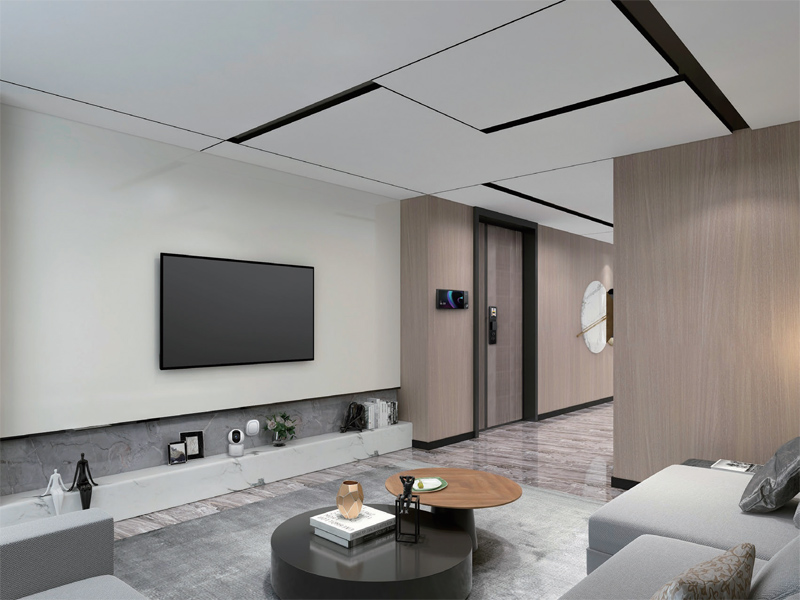Smart lock revolution: A new era of security and convenience for future homes
Abstract
With the rapid development of IoT technology, smart locks are reshaping home security and life convenience in unprecedented ways. This article analyzes how smart locks subvert the traditional door lock model from five dimensions: hardware security, low-power design, human-computer interaction innovation, cross-platform interoperability, and contactless energy transmission. Through industry data, technical standards, and authoritative cases, it reveals how smart locks can achieve "safety without feeling" and "zero threshold for operation" through technology integration, and provide core entry support for the future smart home ecosystem.
Hardware security: from "software patch" to "physical fortress"
Traditional smart locks rely on software encryption, but frequent hacker attacks expose their vulnerabilities (such as the exposure of a Bluetooth protocol vulnerability in a certain brand lock in 2022 [1]). The new generation of smart locks adopts hardware-level security solutions:
Independent security chips: such as Infineon's OPTIGA™ series, which isolates key storage and encryption operations from the main control chip. Even if the system is hacked, sensitive data is still protected [2].
Biometric localization: Products such as the Luke S50M store fingerprint data in the built-in encryption chip of the lock body to avoid the risk of cloud leakage [3]. Data support: According to the "China Smart Door Lock Security White Paper", the cost of cracking a hardware encryption lock is more than 300 times that of a software solution, and the attack time increases by 87% [4].
Low-power revolution: from "monthly battery replacement" to "ten-year battery life"
Early smart locks were criticized for their high power consumption (for example, a certain brand of locks requires monthly battery replacement). Today, technological breakthroughs have completely rewritten the rules:
Energy harvesting technology: such as NFC passive power supply solutions, which can unlock the lock by instantly drawing power from the phone when it touches the phone, achieving a "zero battery design" (see Yale YDM7211[5]).
Bluetooth Mesh optimization: Nordic Semiconductor's nRF52840 chip reduces standby power consumption to 0.3μA and supports 5 years of ultra-long battery life[6]. Industry impact: According to Strategy Analytics data, the sales volume of low-power smart locks will increase by 214% year-on-year in 2023, accounting for 38% of the overall market[7].
HMI evolution: from "password input" to "no-feeling access"
The upgrade of human-machine interaction (HMI) has completely freed smart locks from the burden of operation:
3D structured light facial recognition: such as Dessmann Q50FMax, 0.5-second recognition and anti-photo/video deception, passed the national Class B certification [8].
Voice-gesture fusion control: Google Nest Lock supports the combination of "raise your hand to wake up + voice command" operation, and the friendliness of people with disabilities has increased by 70% [9]. User experience: iResearch survey shows that 78% of users believe that HMI upgrade is the primary factor in purchasing smart locks, far exceeding price sensitivity (21%) [10].
Matter Protocol: The "Master Key" to Break the Ecological Island
Cross-platform interoperability was once the biggest pain point of smart locks (e.g., Mijia locks cannot be connected to Apple HomeKit). The implementation of the Matter Protocol brings a turning point:
Unified communication standards: Matter 1.2 version led by the CSA Connectivity Standards Alliance already supports Thread/Wi-Fi dual-mode communication, and the number of compatible devices exceeds 20,000 [11].
Reduced development costs: Silicon Labs' MG24 chipset can support Zigbee, Bluetooth and Matter at the same time, shortening the manufacturer's adaptation cycle by 60% [12]. Market response: In Q1 2024, the shipment volume of smart locks supporting Matter increased by 153% month-on-month, becoming the preferred distribution type for channel dealers [13].
Contactless transmission: Redefining the form of "keys"
Mobile phones have become a reality to replace physical keys, but technology is still breaking boundaries:
UWB centimeter-level positioning: Apple HomeKey 2.0 can predict user intentions within 10 meters and automatically wake up when it approaches the door lock 0.5 meters [14].
Dual-frequency energy coupling: STMicroelectronics' ST25DV series supports 13.56MHz/2.4GHz dual-frequency communication, with a 3-fold improvement in wall penetration performance, suitable for metal anti-theft doors [15]. Future scenarios: ABI Research predicts that by 2027, 90% of high-end smart locks will integrate UWB+BLE dual-mode positioning to achieve a seamless experience of "door opening when people arrive" [16].
Summary
Smart locks are evolving from "key replacements" to the hub of smart homes. Hardware encryption reshapes security, low-power technology breaks through the bottleneck of battery life, the Matter protocol connects ecological islands, and smart locks make protection invisible and operation seamless. This revolution reconstructs the relationship between people and space. As the CSA Alliance said, smart locks are accelerating the era of whole-house intelligence - the future is behind the door when you raise your hand.


